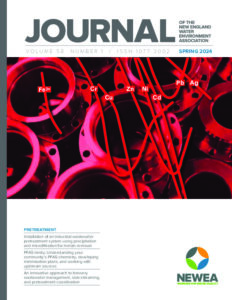Performance Measures and Benchmarking
Performance measures can be used to establish targets against which the performance of an infrastructure asset, in delivering service and business efficiency, can be measured. Without quantitative performance measures, a utility will not be able to judge progress in implementing its asset management program.
Levels of Service
Levels of service reflect the strategic objectives of the organization and are typically based on: customer expectations, regulatory requirements, the organization’s mission and objectives, financial constraints and delivery mechanisms. Service levels form the basis for planning and tracking the success of an asset management program. Different criteria are used for treatment facilities, collection systems, buildings, pumping stations and other utility components. When establishing service levels for facilities, both national and system specific data should be taken into account.
Performance Measures
Performance measures should meet several criteria: meaningful to customers and written in a way that is understandable, easily measurable, consistent with industry benchmarks, able to relate to the utility’s business or strategic plan, and useful as a management tool. Elements of performance that would typically be considered in developing a performance measure would include: anticipated average and peak capacity capabilities for the asset, recommended inspection interval, anticipated interval for major and minor maintenance and recommended renewal or replacement interval.
Efforts should be made to develop performance measures, which will be consistent over time so that progress and trends can be tracked. Long-term targets should be included and performance measure set, which reflect the progress to be achieved annually. By using industry standards where possible, performance can be easily compared with other service providers. The water and wastewater professional organizations in the US have recently made advances in developing standard performance indicators and benchmarking data.
This chapter of the Resource Guide compiles a list of references and other data sources as well as case examples related to performance measures and benchmarking.
Resource List
1. Colbert, John; Regan, Ted; Fortin, John. “Driving Change in Maintenance – Maintenance Metrics” NEWEA Annual Conference 2004.
2. Copeland, Richard; Wells, Scott “Maintenance Benchmarking Study Results” NEWEA 2005 Annual Conference. In-progress – to participate please contact Mr. Copeland at (703) 362-4115.
3. Baldwin, Robert. “Maintenance and Reliability Practices Study” Maintenance Technology Magazine. http://www.mt-online.com/articles/1002_rockwellsurvey.cfm
4. International Facility Management Association. “Benchmarks IV” Research Report #25. IFMA, 1 East Greenway Plaza, Suite 1100, Houston, TX 77046. (713) 623-4362. www.research@ifma.org

